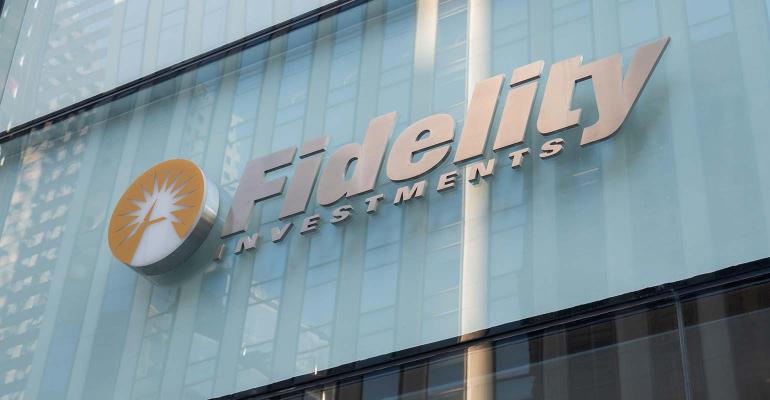One in six advisors changed firms over the last five years, according to new research from Fidelity Institutional, and the majority of those moved to the independent channel.
Now in its fifth year, Fidelity’s annual Advisor Movement Study found 94% of those who moved are happy with their decision and 85% feel they now have more control over their future.
The study, which will be published in early November, also revealed that 80% of “movers” saw their assets subsequently grow, with a median increase of 42%. And virtually all (99%) said their clients supported the move, with 54% saying they were “immediately” supportive.
Even so, only about half of the 1,530 polled advisors said they’re knowledgeable about the options out there and just a quarter know where to find help if they’re considering their own move.
To address that disconnect, Fidelity has created an ‘Independence Hub’ with educational resources and tools that can be accessed on a self-driven basis and by advisors outside of the Fidelity ecosystem.
In addition to an 11-question valuation calculator, the hub offers thought leadership, videos, worksheets and anecdotal stories relevant during certain phases of the process—exploration, transition and growth. A free, downloadable white paper details the steps of constructing a basic technology stack.
“There is a general movement of teams that are working in large firms, large wirehouse firms that are looking to provide different capabilities or services to their clients and moving to go independent,” said Rohit Mahna, head of client growth at Fidelity Institutional Wealth Management Services.
“That’s something we've been tracking for quite some years now, and our teams internally have been working with these teams and our data is just proving it now,” he said. “So, this is our response to that.”
Fidelity already offers “white glove” transition consultation services to advisors and advisory firms, but Mahna said the new resource is meant to provide those just beginning to think about making a move with a place to start and advisors at any stage with quick answers they can engage with on their own.

Rohit Mahna, head of client growth at Fidelity Institutional Wealth Management Services
“What we’ve heard from firms is that they also want to be empowered to run some models on their own, read some documents on their own,” he said. “And that's why we launched the resource hub and that's why we've also taken the RIA valuation tool and made that public.
“It’s something we've been doing for going on 10 years now, but what's new is we've externalized it and it's now a self-service tool.”
Mahna said Fidelity isn’t viewing the Hub as a lead-generation tool, but it would “be gravy” if it works out that way.
“We've got great capabilities internally to help them, whether they need help with technology, if they need help with business development strategies, maybe they need help with practice management or maybe it's more from an investment side,” he said. “Our basic mission is how do we understand where they are in their journey and then how do we support them in it.”
Fidelity recently helped with the transition of Concurrent from an office of supervisory jurisdiction under Raymond James to an independent, hybrid RIA partnership platform—bringing over more than 60 advisor teams, 20,000 accounts and $5 billion in assets in just three months.
“Where we saw the future growth opportunity is in this movement of advisors from employee models to independence,” Concurrent CEO Nate Lenz told Mahna during a recent conversation. “So as we thought about where we could make a difference in the industry, it was really designing a model that would harness that entrepreneurial drive, help advisors build sustainable enterprise value, and I think walking that fine line of full independence and full support is what really caught fire early on.”
Like Fidelity, Lenz said the goal at Concurrent is “to meet advisors where they are and ultimately help guide them to where they want to be.”
“In a lot of ways, Fidelity did that for us,” he said. “You came and met us where we were looking to take that next step and become fiduciaries for our clients and to open up the menu of opportunity for ourselves, both in terms of solutions and technology, as well as growth opportunity.”
“What Nate and his team have done is really just a testament for the opportunity in wealth overall,” Mahna told WealthManagement.com. “And we’re still deeply engaged, even though they’re fully transitioned and up and running. We really view these big transitions as a long engagement model that happens over many, many years.”
The Independence Hub is meant to be a “living and breathing environment,” Mahna said, and will be updated with new tools and information as advisors express interest and the industry evolves.
“I don’t know what’s going to happen next,” he said. “But the next time we speak, there will be more capabilities, there will be feedback that we’ve heard from users. We view this as an area of investment for us and it will continue to grow.”
Fidelity is the second largest custodian in the nation with around $1.5 trillion in RIA assets, behind Schwab and ahead of Pershing and LPL Financial. Together, the quartet custodies 84% of the roughly $6.9 trillion in U.S. RIA assets, according to Cerulli.

